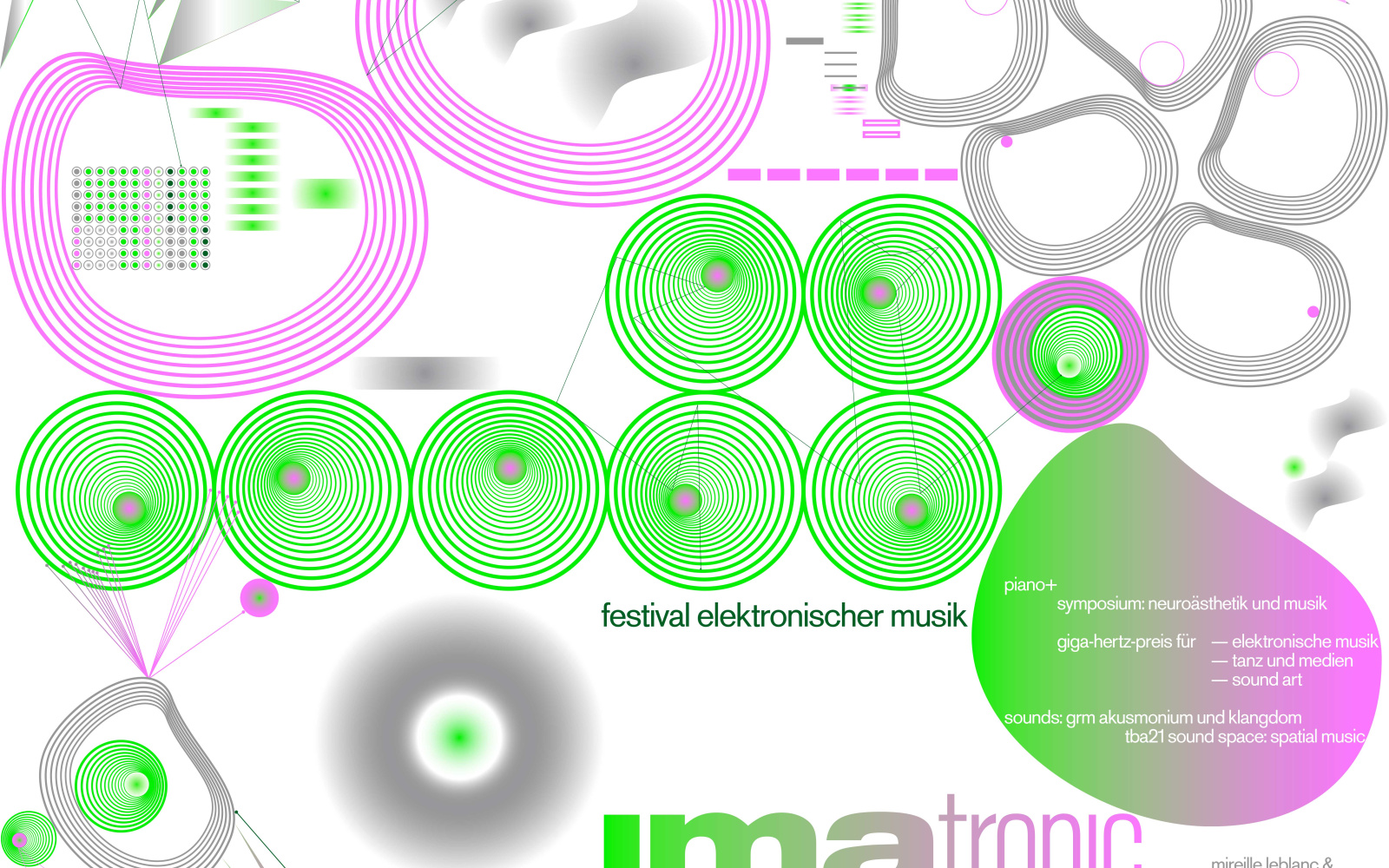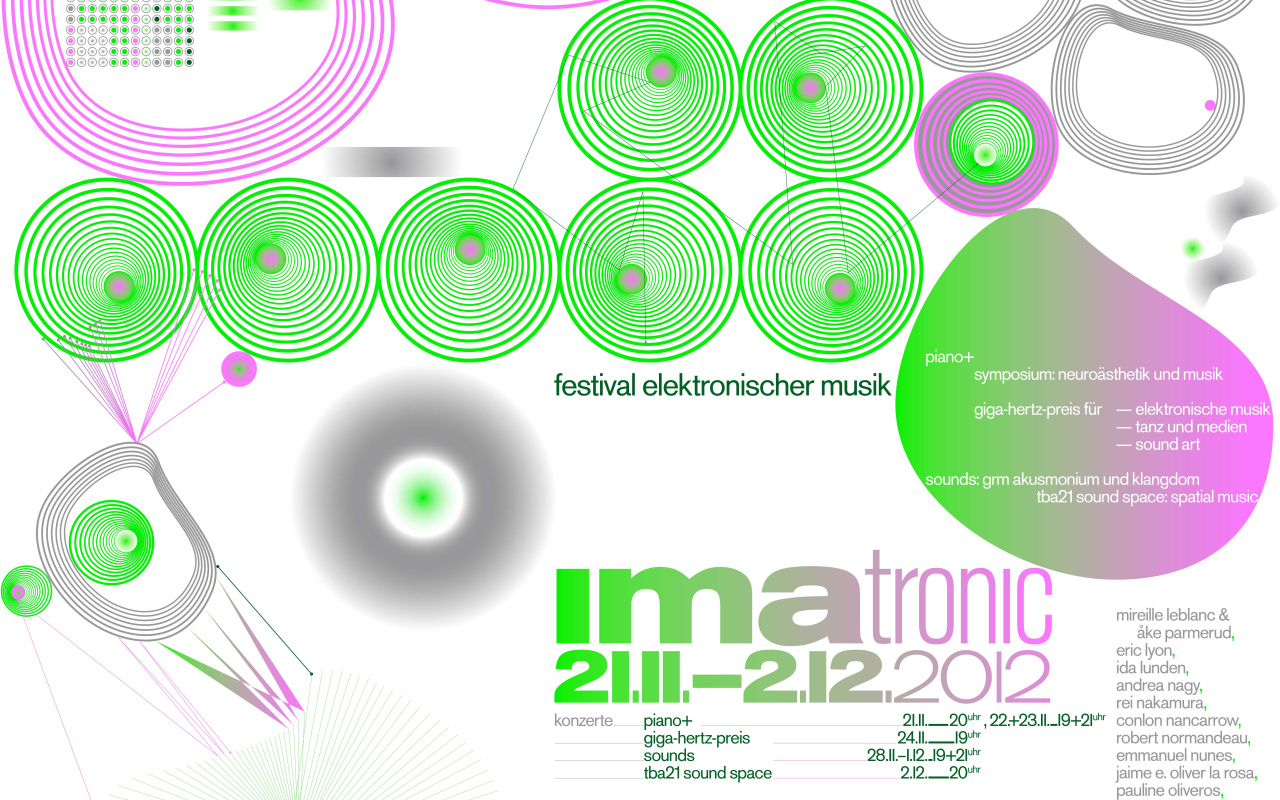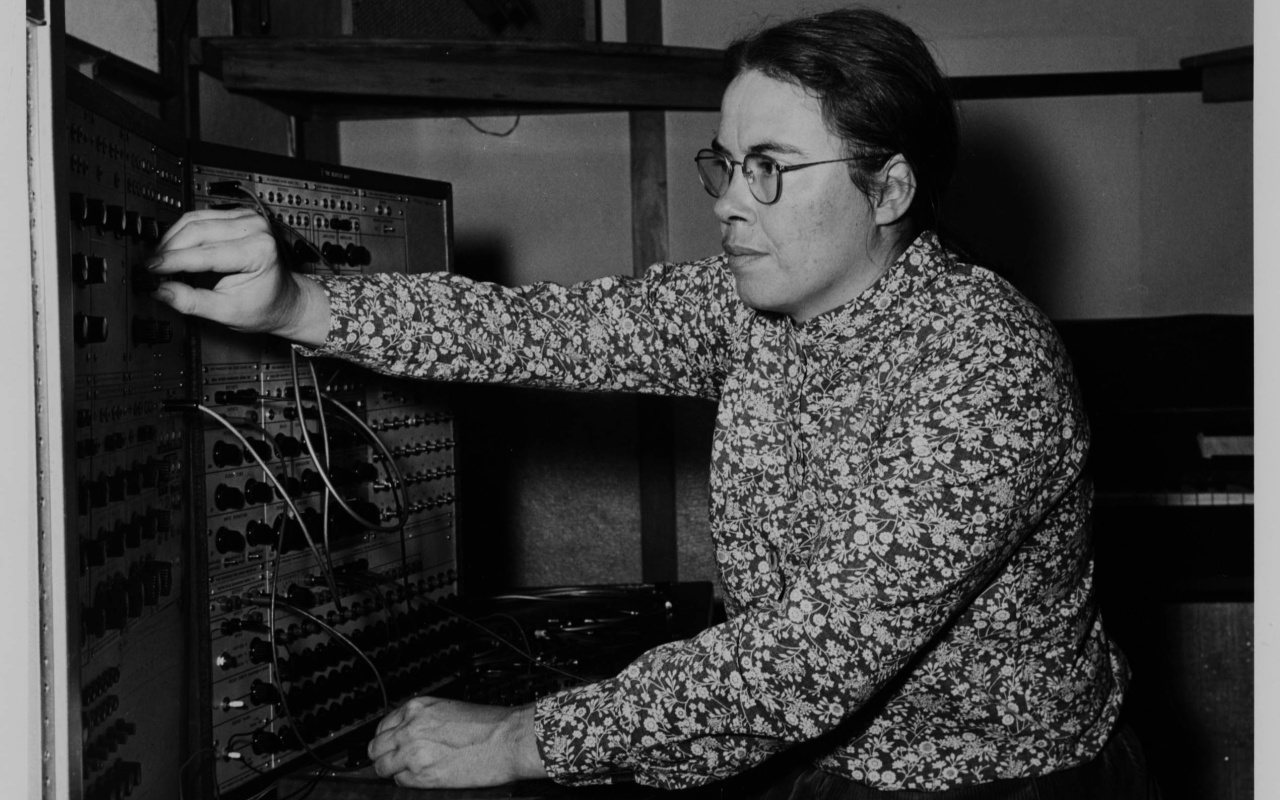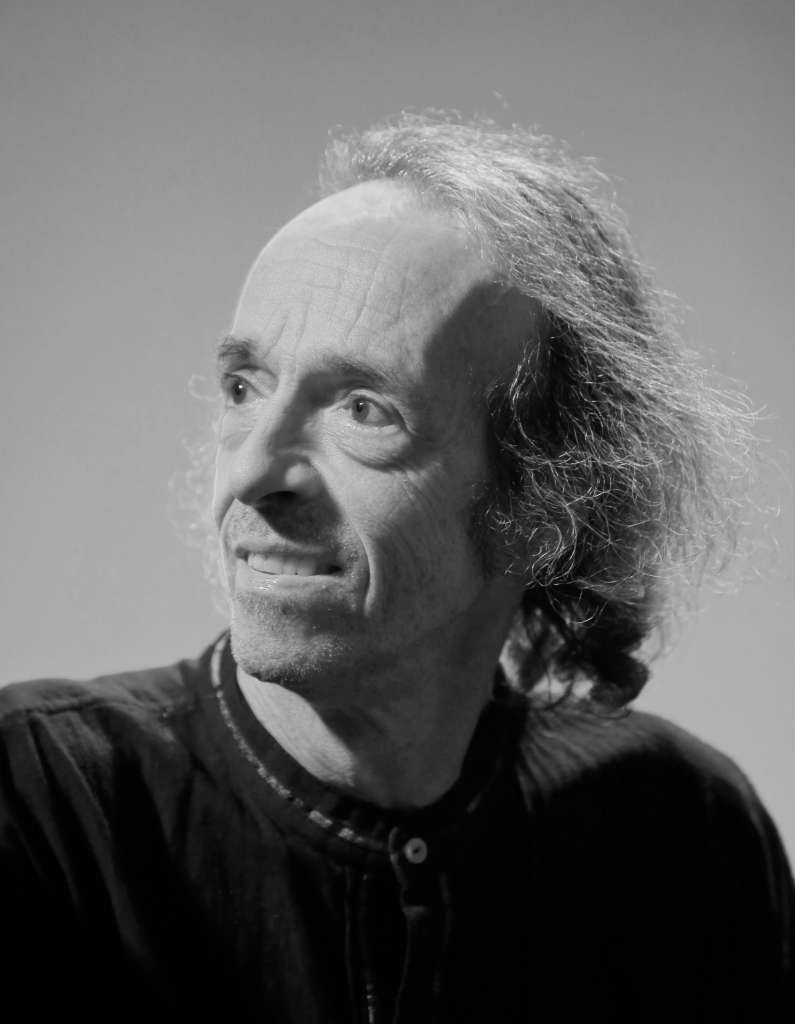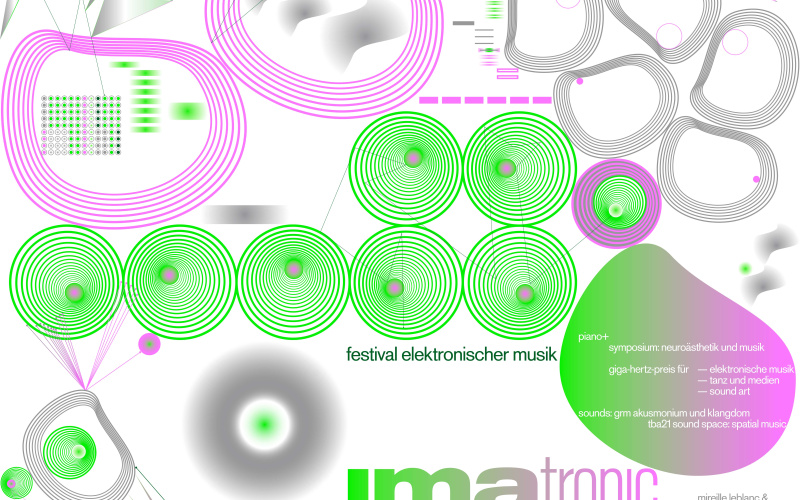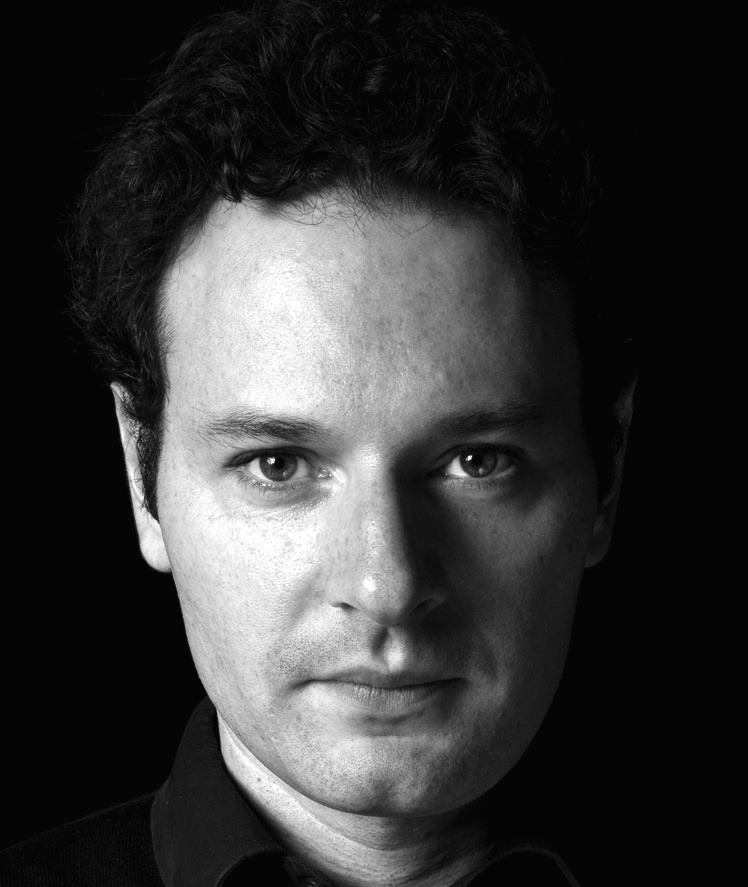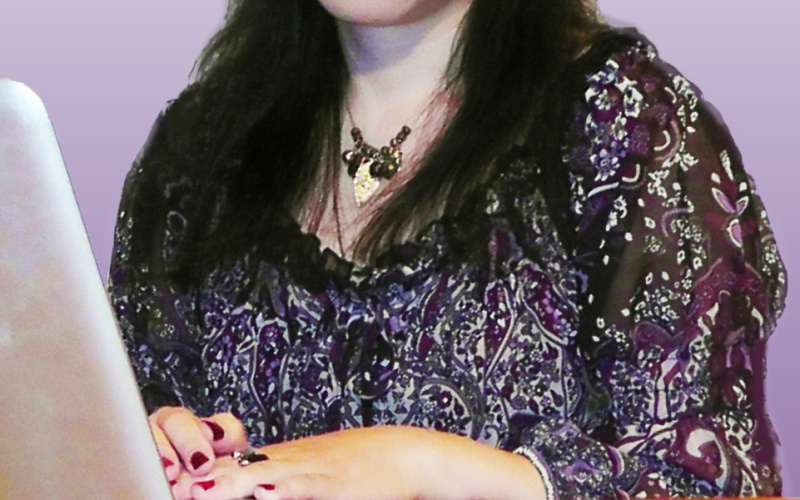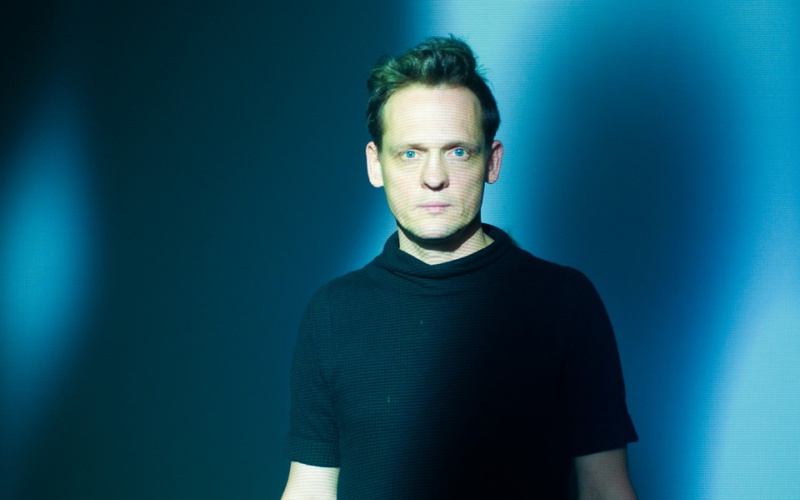Giga-Hertz Award 2012 & Walter-Fink Prize
Sat, November 24, 2012 7:00 pm CET
- Location
- ZKM | Center for Art and Media
The central feature of the IMATRONIC Festival is the award of the Giga-Hertz Award, this year presented in the three categories »Electronic Music«, »Sound Art« as well as »Dance and Media«. The concerts held by award-winners of the ZKM Walter-Fink Prize 2011 provide the ideal background of the program.
Award-winners of the Giga-Hertz Award 2012
The Giga-Hertz Award for Electronic Music has been presented by the ZKM | Karlsruhe each year since 2007 together with the SWR EXPERIMENTALSTUDIO, Freiburg. Whereas the main prize honors renowned composers for their life‘s work, the four production prizes are opened for younger generation contestants.
The announcement for the 2012 competition is directed especially at artists whose work emphasizes audio-visual work.
Due to the high number of high quality submissions, the number of awards this year was increased from five to seven.
A high-caliber jury will select the winner. Alongside permanent core jury members comprising Peter Weibel (Chairman of the ZKM | Karlsruhe), Ludger Brümmer (Director of the ZKM | Institute for Music and Acoustics) and Detlef Heusinger (Director of the SWR EXPERIMENTALSTUDIO), this year other noteworthy guests could be acquired, namely, Frank Madlener (Director of the IRCAM | Institute de Recherche et Coordination Acoustique/Musique Paris), Heike Hoffmann (artistic Director of the Salzburg Biennale) and Robert Normandeau (Professor Université de Montréal).
Presentation of the Walter-Fink Prize
The Walter-Fink ZKM Prize for Dance, Electronic Music and Media was awarded for the last time in 2011. This year, the Walter-Fink Prize functions under the name »Giga-Hertz Prize for Dance and Media«. The Prize for Production is awarded to the technical innovative connection of choreography and sound. Here, electronic and electro-acoustic music, new media and dance enter into a symbiosis, integrating creature-like movements with advanced sound processing and performance technologies.
Preface
-
by the Jury
In 2012, the sixth Giga-Hertz Prize of the ZKM | IMA and the Experimental Studio of the SWR will be awarded. After Jonathan Harvey, Trevor Wishart, Jean-Claude Risset, Gottfried Michael Koenig and Pierre Boulez, this year's prize will be awarded to two personalities of the music world: To American composer and performer Pauline Oliveros and to Portuguese composer Emmanuel Nunes, who sadly passed away unexpectedly after the jury's decision. While Nunes established his reputation in the concert halls of new music, where he tirelessly explored the possibilities of the loudspeaker in interaction with instruments and performers, Pauline Oliveros drew the ideas for her work from the realities of American experimental music. Both created an oeuvre that could not be more different, yet perfectly complemented each other to form a picture of vibrant creativity.
The three production awards will be presented to the French composer Brice Pauset, and the Italian composers Valerio Sannicandro and Lara Morciano. The sponsorship awards will go to Japanese Kumiko Omura and American Douglas Henderson.
The jury for the Giga-Hertz Prize for Electronic Music consisted of the artistic director of the Salzburg Biennale Heike Hofmann, the artistic director of IRCAM Frank Madlener, the composer and professor Robert Normandeau, the director of the Institute for Music and Acoustics Ludger Brümmer, the director of the Experimental Studio of SWR Detlef Heusinger and the director of ZKM | Karlsruhe Peter Weibel.
As an innovation, two additional, highly endowed prizes will be awarded for the first time this year. The Giga-Hertz Prize for Sound Art goes to the artist duo Carsten Nicolai and Ryoji Ikeda, who temporarily worked together, for their production "cyclo.id," in which sonic properties were visualized. Furthermore, the Giga-Hertz Prize for Dance and Media will be awarded for the first time to Myriam Gourfink and Kasper T. Toeplitz. After the Walter Fink Prize has made extremely interesting projects possible, the ZKM | Karlsruhe decided to continue this project, which was generously supported by Walter Fink for three years, independently.
Main Award Winners 2012
Pauline Oliveros (USA)
The jury was impressed by Pauline Olivero's innovative strength, the independence of her artistic path, the consistency of her activities and the universality of her aesthetic position. Born in 1932 in Houston, Texas, Pauline Oliveros is one of the pioneers of a completely new music that operates independently of European patterns. In this she exposes not only the music itself, but also the way in which music is received and the role that music plays in our lives. The term »deep listening«, which she coined, advanced to a new way of thinking about sound and the relationship of the listener to this sound. Oliveros worked for a long time as an accordionist, among others at the premiere of Terry Riley's »In C« in 1964. In her own music she was influenced by the characteristics of this instrument. Thinking in sound layers as well as in long uninterrupted events goes back to these experiences. She anticipated what was later called Ambient and Noise. With her unpretentious attitude, she developed an individual, playful approach to a multitude of electronic or acoustic instruments, away from the mainstream. In 1961, together with Steve Reich, Terry Riley, Ramon Sender and Morton Subotnik, she founded the still existing San Francisco Tape Music Center, taught at Mills College, the University of San Diego and currently at the Rensselaer Polytechnic Institute. In addition to the accordion, she impovises with her own expanded instrument system, a set of instruments for real-time signal processing. She founded the Pauline Oliveros Foundation, which later became the Deep Listening Institute.
Emmanuel Nunes (Portugal)
»Emmanuel Nunes was and remains one of the most idiosyncratic and exciting composers of our time,« writes Gerhard Rohde in his obituary published in the FAZ on September 4, 2012. He was one of the few participants of the composition courses of Boulez and Stockhausen to be able to translate their then still latent serial approach into his own compositional language and to continue it, and he was exciting because he fought with unrelenting consistency for a musical ideal that can rarely be achieved under the constraints of today's music. He is honoured here for his use of and for live electronics. Already in his first significant work with this Transformations, commissioned in 1986 by the then Südwestfunk Baden-Baden in the Experimentalstudio Freiburg, he consistently used the sound »transformation« possibilities available to him at that time and added a spatial dimension to the work via the halaphone.
He then continued the work begun in the experimental studio at the IRCAM, with some of his works strangely bearing German titles such as »Nachtmusik, Lichtung, Einspielung« or even his music theatre »Das Märchen« after Goethe. This affinity to German culture and language finds its final point in »Peter Kien – an acoustic mask«, his last work with live electronics as well as his last opus. It works with speech rhythmics, speech melodics and speech phenomenology and, like these, the inherent problems of linguistic and musical communication associated with them. The »acoustic mask« refers to the term »character mask« and poses the unanswered question of the extent to which such a mask also exists in musical terms. The task of live electronics is to decipher and orchestrate instrumental character masks or instrumental idioms, it is not »make-up« (as Emmanuel Nunes himself says) on the texture, but essential for the actual content of the work. Consequently, only the transformed sounds from the loudspeaker are relevant to the sound image, which is why Nunes even considered an acoustic wall in front of the musicians at the premiere of »Peter Kien – an acoustic mask«. His ability to think in different layers and thus develop a complex musical phenomenology points far into the future.
Program
The award ceremony with renowned speakers from art and politics, such as Robert Normandeau and Frank Madlener is ideally complimented by concerts by award winners from previous years. This is followed by performances by prize-winners Mireille Leblanc and Åke Parmerud of the Walter-Fink Prize of the ZKM 2011.
from 7 p.m., ZKM_ Foyer
Award Ceremony
Welcome
Laudation and award of the Giga-Hertz Prize in the categories “Electronic Music”, “Sound Art” and “Dance & Media”
following, ZKM_Foyer
Presentation of the Walter-Fink Prize 2011
Ake Parmerud & Mireille Leblanc: "Shadowplace", dancer: Jana Griess
Champagne reception
following, HfG_Studio
Concert of the Giga-Hertz Prize winners 2010, 2011 and 2012
- Dániel Péter Biró: ";Bahar"
- Kee Yong Chong: "Wu Wei. Meng Die"
- Emmanuel Nunes: “Einspielung I”
with José Miguél Fernandéz, Noa Frenkel, Sven Thomas Kiebler, Andrea Nagy, Diego Tosi, Olaf Tzschoppe, Wei Wu
Live-electronic realisation: EXPERIMENTALSTUDIO of the SWR<
following, Reception and Buffet
following, ZKM_Cube
Concert of the Giga-Hertz Prize winners 2010, 2011 and 2012
- Pauline Oliveros: "Three Pieces"
- Andrea Vigani: "NIce to Meet You"
- Benedikt Schiefer: "Azoth oder das große Werk (Bruchstück, Chaos Veterum)"
- Horacio Vaggione: "Consort For Convolved Piano Sound"
- Jamie E. Oliver La Rosa: "9 Gardens"
with Jamie E. Oliver La Rosa, Pauline Oliveros, Benedikt Schiefer, Horacio Vaggione, Andrea Vigani, Anna Zassimovà
Program
Program
- ghp_ph_2012_imatronic_korrekturdateii.pdf (962.21 KB)
Jury
Ludger Brümmer (Composer, Head of ZKM | Hertz-Lab)
Detlef Heusinger (Artistic Director of SWR Experimentalstudio)
Frank Madlener (Director of IRCAM,Paris)
Heike Hofmann (Artistic Director of Salzburg Biennale)
Peter Weibel (Artistic Director of ZKM | Karlsruhe)
